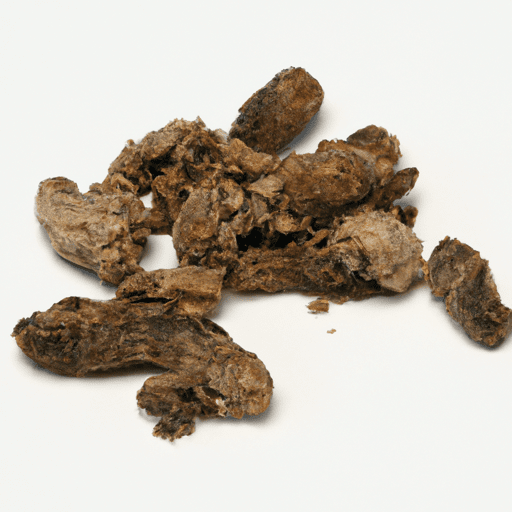Exploring the Flavorful World of Beef Suet
If you’re a food enthusiast or a passionate home cook, you might have come across the term “beef suet.” This rich culinary ingredient is known for its distinct flavor, versatility in cooking, and interesting historical significance. Let’s explore the wonderful world of beef suet, from its taste and common uses to its nutritional value and fascinating history.
Taste and Texture
Beef suet, derived from the kidneys and loins of cows, is the raw, hard fat that surrounds these organs. With its creamy white color and firm texture, suet adds a unique richness to dishes. The primary flavor of beef suet is that of pure, unadulterated fat. When cooked, it releases a delectable, savory taste that enhances the overall flavor profile of any meal.
Common Uses
Traditionally, beef suet has been a staple in both sweet and savory dishes, lending its benefits to a wide range of recipes. Here are a few common uses of beef suet in cooking:
Pies and Pastries: The key to a perfectly flaky crust lies in the addition of suet. Incorporating finely chopped or grated beef suet into your pie or pastry dough creates pockets of fat that melt during baking, resulting in a tender, buttery finish.
Puddings: Before the era of margarine or butter, suet was the fat of choice for making traditional English steamed puddings, such as the beloved Christmas pudding. The high melting point of suet allows the mixture to hold shape and add moisture, resulting in a dense, moist, and decadent pudding.
Meat Dishes: Suet can be used to enhance the flavors of stews, casseroles, and roasts. As it slowly melts during cooking, it not only imparts a rich taste but also helps keep the meat moist and tender.
Bird Feeders: While not technically a cooking use, beef suet is often used in making homemade bird feeders. Mixed with birdseed, it provides a high-energy treat for our feathered friends, especially during the colder months.
Nutritional Value
Although beef suet is primarily fat, it does offer some nutritional benefits. Here are a few key points:
- Calorie-dense: Suet is more calorie-dense than other fats, providing a concentrated source of energy.
- Vitamin E: It contains vitamin E, an antioxidant that helps protect the body’s cells from damage.
- Natural Fats: Unlike trans fats or hydrogenated oils, beef suet is a natural fat source that can be consumed in moderation as part of a balanced diet.
However, due to its high fat content, beef suet should be consumed in moderation, particularly by individuals with specific dietary requirements or restrictions.
History and Fascinating Facts
Beef suet has a fascinating history that spans centuries. Here are a few intriguing facts:
- Historical Cooking Fat: Before the advent of vegetable oils or butter, suet was a staple fat used for cooking and baking in many cultures around the world.
- Long Shelf Life: Due to its high saturated fat content, suet has excellent stability and a long shelf life, making it an ideal ingredient for long-lasting provisions.
- Colonial Connection: In British colonies, dried and rendered suet became a valuable trading commodity, establishing its significance in early colonial life.
- Cultural Significance: Suet-based dishes hold cultural significance across various cuisines, such as the Scottish haggis and the Canadian tourtière.
With its rich history and versatility in the kitchen, beef suet continues to thrive as a beloved ingredient in traditional recipes and modern adaptations alike.
Next time you’re in the mood for some culinary adventure, consider exploring the flavors and possibilities of beef suet. Whether you’re baking a flaky pie crust or experimenting with traditional pudding recipes, suet offers a remarkable taste and texture that will elevate your culinary creations to new heights. Embrace the rich heritage and versatility of beef suet, and let your taste buds embark on a delightful journey through time and flavor.
Origin:
Beef suet is the hard fat that surrounds the kidneys and other organs of a cow. It is derived from the abdominal cavity of the steer or heifer. Suet has been used in cooking for centuries and was a staple fat in many European cuisines.
Common uses:
Beef suet has traditionally been used in a variety of culinary applications. It is often rendered and used in the production of suet puddings, such as the British Christmas dessert known as “Christmas pudding” or “plum pudding.” It can also be used to make suet pastry, which is commonly used in meat pies and savory pastries.
Nutritional benefits:
Beef suet is primarily composed of saturated fat and is a rich source of energy. It also contains essential fatty acids, including omega-6 and small amounts of omega-3 fatty acids. Additionally, beef suet provides fat-soluble vitamins like vitamin A and vitamin D.
Unique properties and historical significance:
In the past, beef suet played a crucial role in preserving and storing food. Due to its high saturated fat content, it has a relatively high melting point and has good stability at room temperature. These properties made it an ideal fat for sealing and preserving meat in dishes like potted meats and suet-crust mince pies. In some cultures, suet was also used as a lubricant for machinery and as a component of candles.
Note:
While beef suet has been a traditional ingredient in many recipes, it is important to note that its high saturated fat content means it should be consumed in moderation as part of a balanced diet.




Use the share button below if you liked it.
It makes me smile, when I see it.